365 Urban Species. #068: Red-bellied Woodpecker
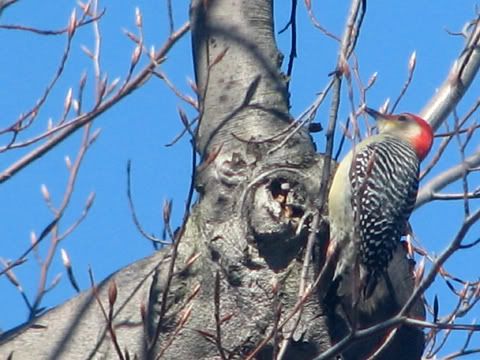
Urban species #068: Red-bellied woodpecker Melanerpes carolinus
photos by cottonmanifesto
Despite its name, the red-bellied woodpecker doesn't have a distinctly red belly. In Boston it can easily be distinguished from the other two urban woodpeckers by its size: it's larger than a downy woodpecker and smaller than a northern flicker. It does have a distinct trilling song, reminiscent of a gray treefrog. I have only recently learned its field markings, as I have only noticed this bird in Boston in the past couple years. It is not thought to be a common bird in New England, but that appears to be slowly changing. They are a bird of the southeast, that in the twentieth century began to spread northward, like the northern cardinal, the tufted titmouse and the northern mockingbird. It's interesting to note that these birds have spread rather counterintuitively from less densely populated regions (the west and south) to the most densely region in North America (the northeast). What makes this more remarkable is that the red-bellied woodpecker requires fairly large dead trees to be able to make use of a habitat, a feature not generally associated with the urban landscape. It's possible that since the farmland of 17th and 18th century New England has given way to the suburbs of modern time that there is actually more suitable habitat for woodpeckers than in the past few centuries. The red-bellied woodpecker also prefers forest edges to dense forested wilderness, and can make use of typically suburban food sources such as tree fruits and beech nuts.
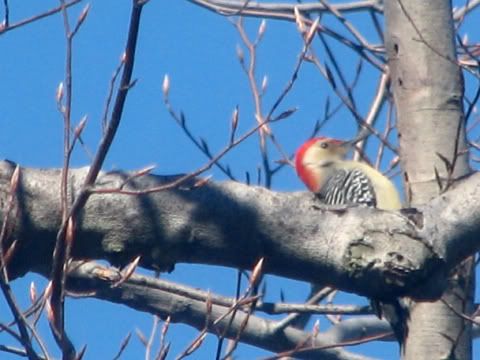
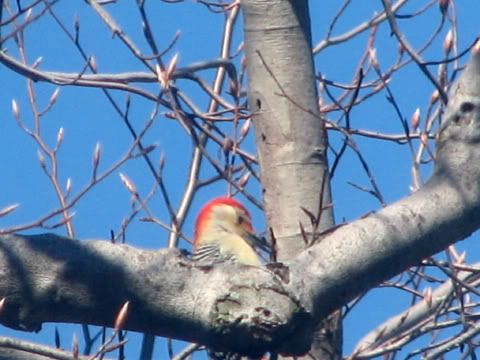
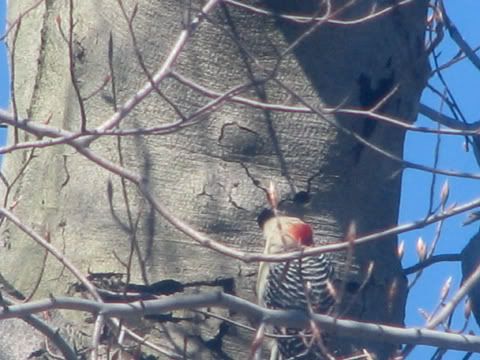
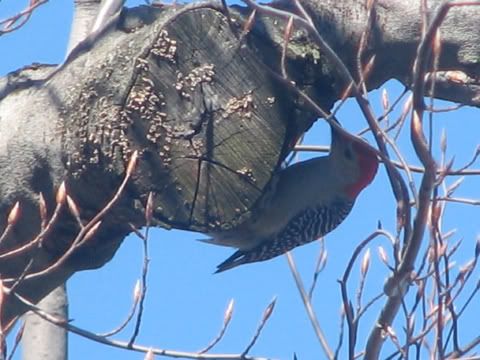
Photographs taken out our bedroom window, of a red-bellied woodpecker exploring a European beech tree, looking for insect larvae and pupae.